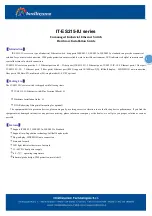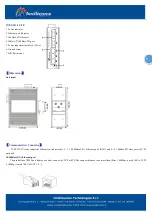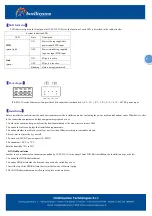
6
Wiring Requirements
Cable laying need to meet the following requirements,
1. It is needed to check whether the type, quantity and specification of cable match the requirement before cable laying;
2. It is needed to check the cable is damaged or not, factory records and quality assurance booklet before cable laying;
3. The required cable specification, quantity, direction and laying position need to match construction requirements, and cab le length depends on actual
position;
4. All the cable cannot have break-down and terminal in the middle;
5. Cables should be straight in the hallways and turning;
6. Cable should be straight in the groove, and cannot beyond the groove in case of holding back the inlet and outlet holes. C ables should be banded and
fixed when they are out of the groove;
7. User cable should be separated from the power lines. Cables, power lines and grounding lines cannot be overlapped and mixe d when they are in the
same groove road. When cable is too long, it cannot hold down other cable, but structure in the middle of alignment rack;
8. Pigtail cannot be tied and swerved as less as possible. Swerving radius cannot be too small (small swerving causes terrible loss of link). Its banding
should be moderate, not too tight, and should be separated from other cables;
9. It should have corresponding simple signal at both sides of the cable for maintaining.
【
Specifications
】
Technology
Standard: IEEE802.3, IEEE802.3u, IEEE802.3x
Transmit Rate: 148810pps
Max Rate of Filtrate: 148810pps
Processing type: Store and Forward
MAC address: 2K
Interfaces
RJ45 port: 10/100BaseT(X) auto connection, Full /Half duplex or force work mode, and support MDI/MDI-X connection
Fiber port: 100BaseFX ports (SC/ST connector, optional)
Single-mode: 20, 40, 60, 80, 100,120Km, optional
Multi-mode: 2Km, optional
Wavelength: 850nm, 1310nm, 1550nm
Power
24VDC power input (12
~
48VDC)
Consumption is less than 2.7W
Overload Current Protection
IT-ES215-IU

























